You’ve reached your limit!
To continue enjoying Utility Week Innovate, brought to you in association with Utility Week Live or gain unlimited Utility Week site access choose the option that applies to you below:
Register to access Utility Week Innovate
- Get the latest insight on frontline business challenges
- Receive specialist sector newsletters to keep you informed
- Access our Utility Week Innovate content for free
- Join us in bringing collaborative innovation to life at Utility Week Live

A new Scottish Water-backed treatment plant and distribution network is coming on stream in the Scottish Highlands. Utility Week Innovate explores a raft of joint venture-led innovation four years in the pipeline.
Led by ESD Joint Venture – which brings together Galliford Try, MWH Treatment and Binnies on behalf of Scottish Water – the new £34 million network based out of Loch Ness promises the long-term supply of high quality drinking water to Fort Augustus and Glenmoriston – with capacity to meet peaks during the Highland tourist season.
 One of Scottish Water’s largest drinking water investments to date, the project – which began in 2018 – has seen the construction of a new treatment works, intake and distribution systems to connect two previously separate supply areas, and the creation of two service reservoirs.
One of Scottish Water’s largest drinking water investments to date, the project – which began in 2018 – has seen the construction of a new treatment works, intake and distribution systems to connect two previously separate supply areas, and the creation of two service reservoirs.
Given proximity to Scotland’s Great Glen Way – a 118.5km coast-to-coast corridor of wilderness linking Fort William and Inverness – and the steep terrain surrounding Loch Ness, leaving a light environmental footprint has proven problematic, yet paramount. What’s more, major obstacles also surfaced from underwater phases of work.
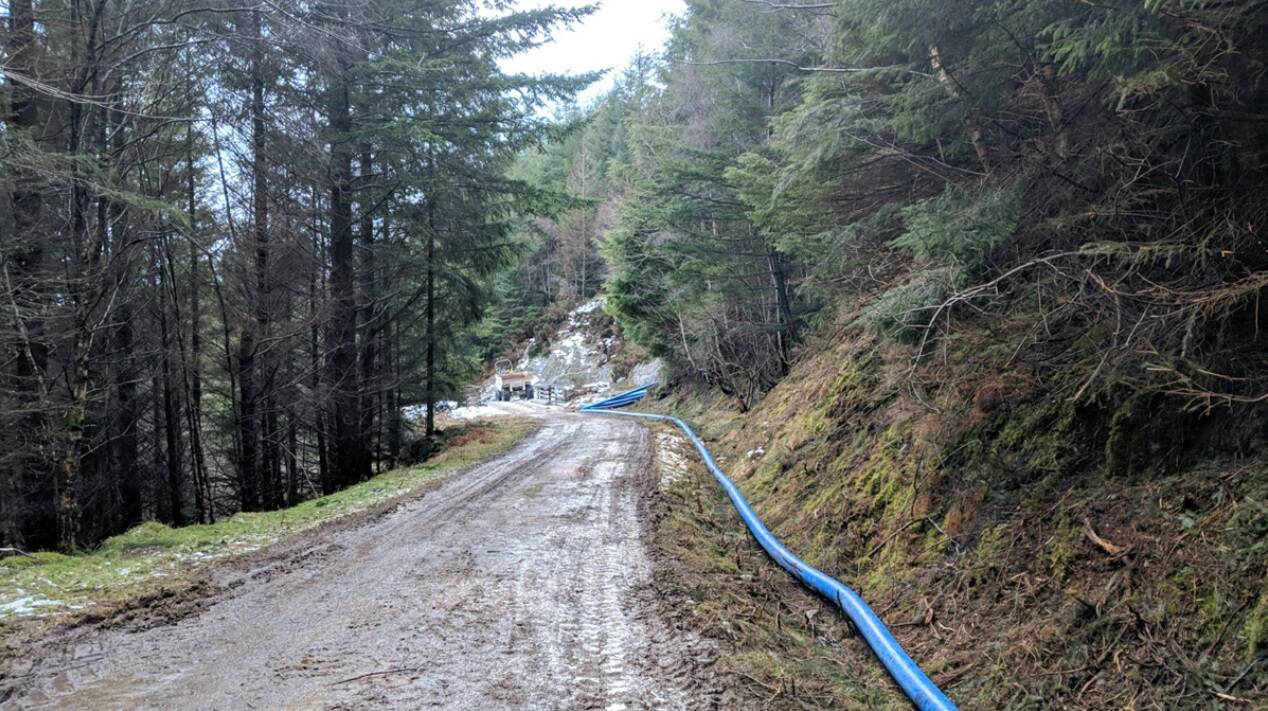 Coming on stream in September 2022, the project’s new intake system, for example, required a new 75 meter pipe to be buried beneath Loch Ness – the UK’s largest freshwater loch.
Coming on stream in September 2022, the project’s new intake system, for example, required a new 75 meter pipe to be buried beneath Loch Ness – the UK’s largest freshwater loch.
“A mix of new technologies, digital approaches and ingenuity has driven this project and enabled it to overcome some significant challenges,” Mark Dickson, director of capital investment at Scottish Water, said of the project.
“By working closely with the Highland Council, local businesses and communities, we hope that we have left a positive legacy, both in terms of what has been built and the way it has been achieved.”

- Resilience, reliability and collaborative transformation to adopt technology and innovation are among the key themes at the Utility Week Forum, which will take place in London on 8-9 November. Find out more here.
Underwater innovation
According to Kelton Bennett, senior project manager at ESD Joint Venture, for above ground pipelaying a trench would be excavated to the required depth in short lengths before the installation of a section of pipe, which would then be backfilled. Pipes are then joined together until completion.
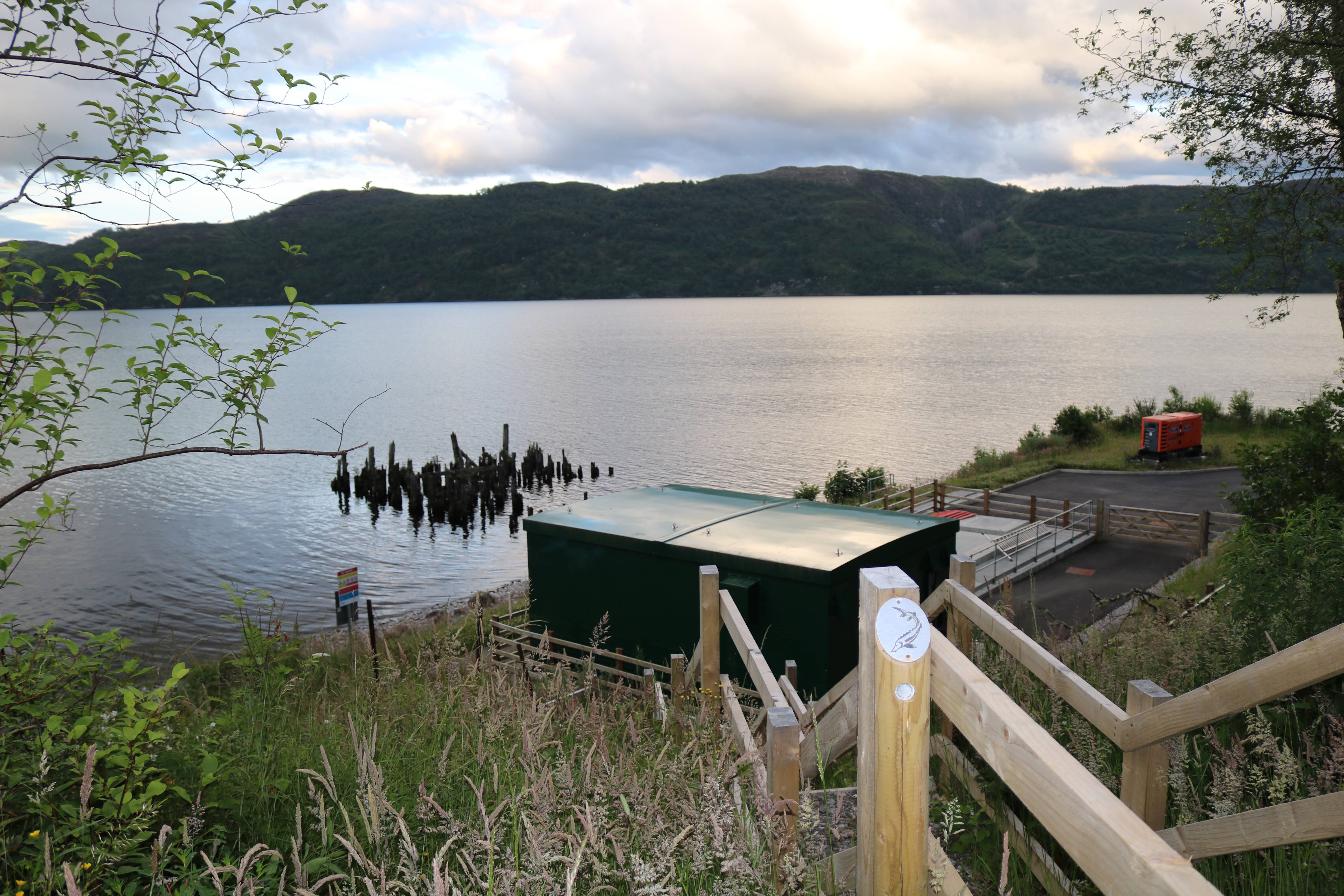 Working below water, however, demanded that the full pipe be installed in one piece. A significant undertaking amid challenging terrain.
Working below water, however, demanded that the full pipe be installed in one piece. A significant undertaking amid challenging terrain.
The pipe was welded together with precast concrete anchor blocks attached and spaced so that it remained buoyant when empty. This allowed the pipework to be floated into Loch Ness and sunk into position when slowly filled with water.
To limit construction within the Loch, project teams also used rock-filled polypropylene mesh bags to form the main intake structure to remove the need for any underwater concrete pours. Bulk bags of clean gravel were lowered around the pipe before the remainder of the trench was then backfilled by an excavator recycling stone from the temporary platform it was working from within the loch.
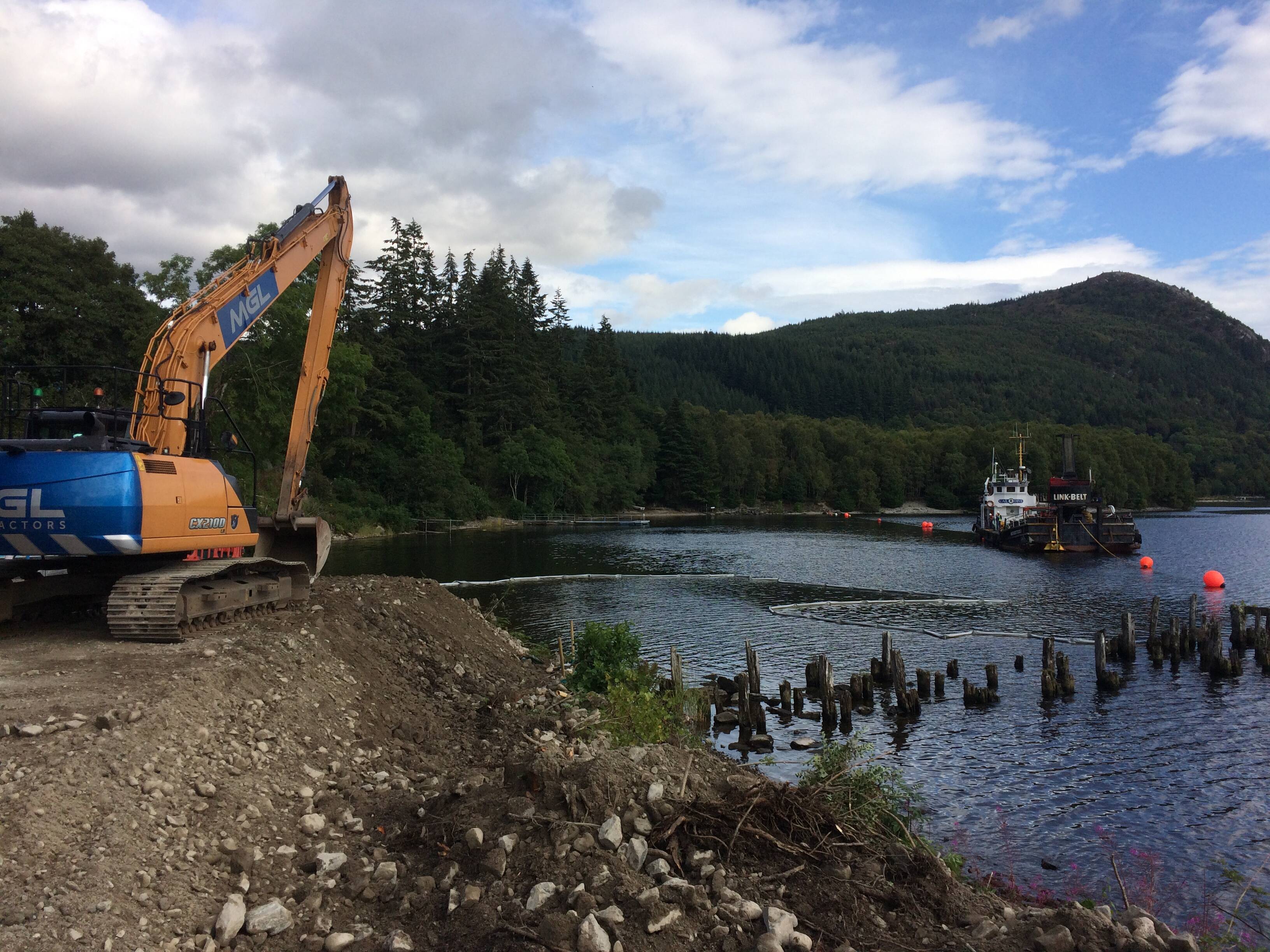 Bennett added that had concrete been used, temporary works would have been significant and carried high pollution risk in a very sensitive water environment. This would have affected authorisation from the Scottish Environment Protection Agency and potentially added months onto the project timeline.
Bennett added that had concrete been used, temporary works would have been significant and carried high pollution risk in a very sensitive water environment. This would have affected authorisation from the Scottish Environment Protection Agency and potentially added months onto the project timeline.
The project team also deployed silt curtain technology to protect this sensitive environment by creating a floating screen around the works and thereby containing any silt or turbidity generated.
NRC Environmental, a firm predominantly working within oil and gas, deployed a plastic and geotextile composite-based sheet consisting of three separate panels. The “negatively buoyant” structure didn’t require any lead attachments along its base and was fitted with floatation devices to support. The measure won a Silver Scottish Green Apple Award in 2020 as well as an international Green Apple Award for environmental management.
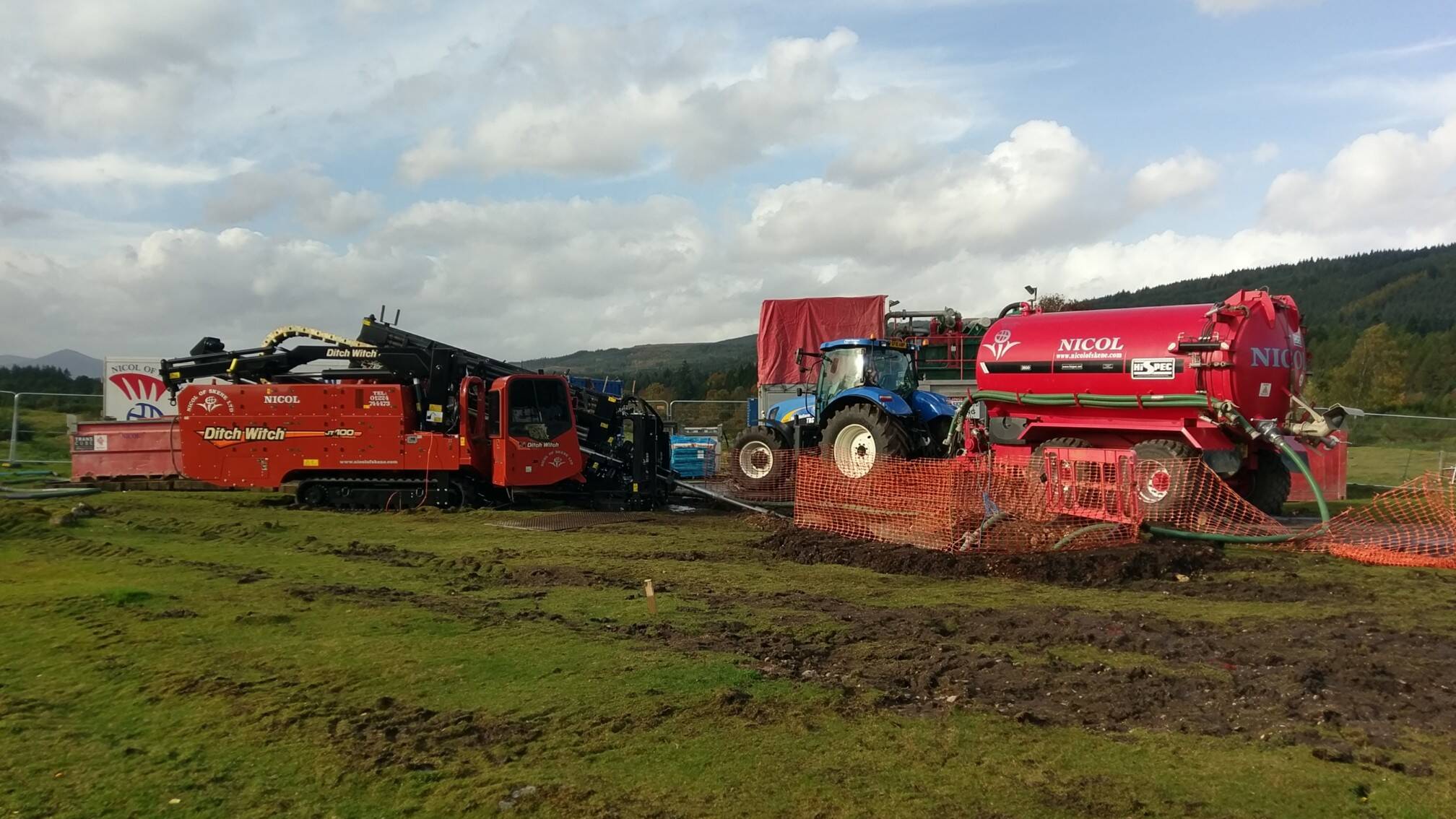
Breaking new ground
Within Fort Augustus, a new water main crossing also had to be created beneath the River Oich and the 200-year-old Caledonian Canal, one of the Scottish Highlands’ most popular visitor attractions and one benefitting from Scheduled Monument status – the oldest form of heritage protection.
This required horizontal directional drilling and pipe borings for the 350 metres of pipes that would run beneath both. It was originally agreed with Scottish Canals and Historic Scotland that there would be six meters cover between the base of the canal and drilling equipment. However a revised proposal saw this reduced to three meters in order to minimise the excavation depths for both launch and reception pits.

What’s more, soon after drilling began engineers noticed a loss of drilling fluid – which maintains the drill’s stability and transports cuttings to the surface – indicating that the drill had encountered voids in rubble used by the 19th canal’s century architects. In response, the project teams deployed hammer-driven auger bore technology from Finnish company Geonex – the first time such an approach had been used on a Scottish engineering project.
The firm, which specializes in “down the hole” drilling techniques, offered a non-displacement solution featuring its own power pack and that didn’t require any concrete base or thrust walls.
“We had been unable to carry out any ground investigation across the canal and based on the original attempts using horizontal directional drilling techniques we assumed there may have been a significant amount of fill material placed during its construction,” Michael Agolini, production stream lead at Ross-shire Engineering (RSE), explained. “The solution was suitable for drilling in all ground types – even through rock fill.”
Efficiencies and improvements
On top of this, working to restricted windows around both the tourist season and salmon migration cycle demanded that the project team find efficiencies as the project progressed.
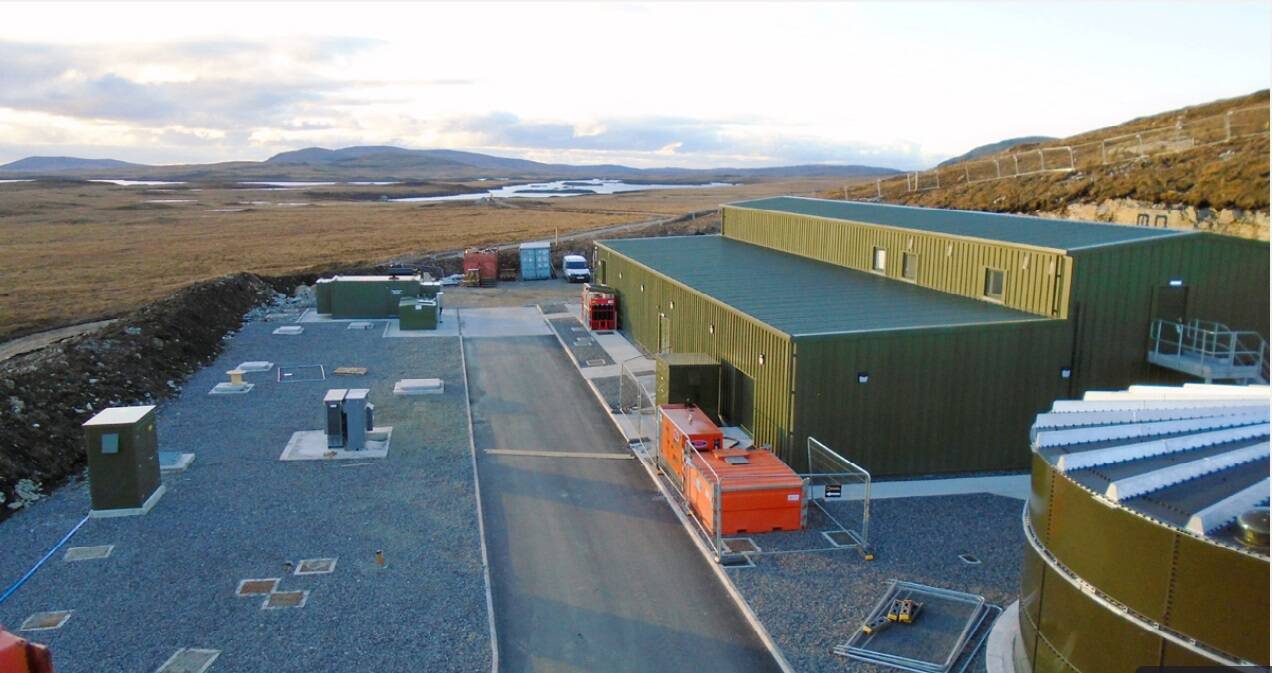 As such they shifted assembly of treatment plant offsite to RSE’s factory in Muir of Ord – where 12 modules were designed, fabricated, assembled, tested and pre-commissioned.
As such they shifted assembly of treatment plant offsite to RSE’s factory in Muir of Ord – where 12 modules were designed, fabricated, assembled, tested and pre-commissioned.
According to Agolini, only 15% of project hours were spent onsite, which cut costs and improved both health and safety performance and carbon emissions. The adoption of modular units also chimed with ambitions around a the circular economy, with the transportable works reusable on other projects and slashing the number of redundant assets, Agolini explained.
Ultimately, the water treatment works created is a 1,000m3/day membrane plant with sodium hypochlorite and ammonium sulphate disinfection, limestone media remineralisation, monosodium phosphate plumbosolvency protection and sodium hydroxide pH correction.
This uses nano-filtration membrane technology, an increasingly popular process in Scottish wastewater treatment as it uses fewer chemicals, has a lower carbon footprint, and uses chloramination – chlorine and small amounts of ammonia are added to the water one at a time which react together to form long-lasting disinfectant chloramine – rather than chlorination.
The works also boasts a fully integrated PROFIBUS network providing communication between field sensors and the control system, alongside a supervisory control and data acquisition system.
 Utility Week Innovate, in collaboration with Utility Week Live aims to discover and promote innovative approaches to tackle front line business challenges through case studies, technical/project studies, networking, and live content. Be recognised as a key solution provider and meet your target audience face-to-face at UWL23. Find out more about exhibiting
Utility Week Innovate, in collaboration with Utility Week Live aims to discover and promote innovative approaches to tackle front line business challenges through case studies, technical/project studies, networking, and live content. Be recognised as a key solution provider and meet your target audience face-to-face at UWL23. Find out more about exhibiting
Please login or Register to leave a comment.